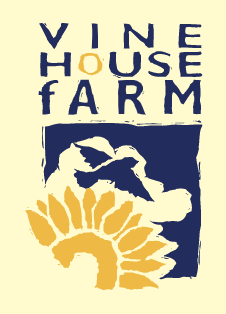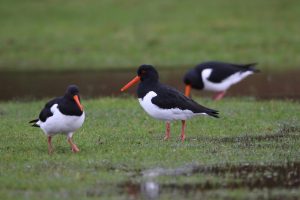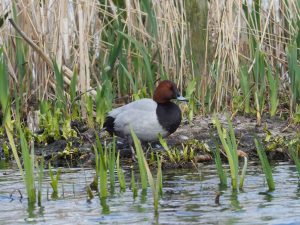
March has been quite kind to us, above average temperatures, and below average rainfall. March is on average our second driest month, with February being the driest, this year we had 29mm with the average being 38mm. A mean temperature this month of 7.1 °C with above average sunshine with an average being 6.3°C.

A lot has happened on the farm during the past month. With the good weather we have been flat out drilling spring barley, spring beans and sugar beet. We have had a driverless tractor drilling sugar beet, it doesn’t look much like a tractor as it doesn’t have a cab and it is powered by solar panels, which, because it could be moving in any direction, are flat on the machine. It knows where it has planted every sugar beet seed in the field and when the weeds start coming up, it will hoe the field more than once, keeping it weed free all through the summer.
We haven’t bought the driverless tractor, it is a demonstrator from Denmark. It has been very slow, but it is doing the job that it set out to do. It is one of four in the country this year; they have been operating in Germany and Denmark for the past two years.
When it has completed the sugar beet drilling, it will be rested for a week or two and then set off to weed the field – even though we may not be able to see any weeds. It will be aiming to take the weeds out before they emerge; when it has reached the far side of the field it will come back and start again. In a normal year, we spray our sugar beet four or five times for weeds and although the sugar beet plants are resistant to the spray, they get slightly suppressed, so we are hoping that by not using any sprays we will get a higher yield.
On the farm we are experiencing massive inflation. Nitrogen – our basic ingredient to increase yields – has gone from £240/tonne this time last year to £1,000 this year. We are told that the main reason for the increase is the rise in price of natural gas. With this shortage of nitrogen, farmers will be applying less of it, which will produce less tonnes per hectare of what we are growing. Wheat is a prime example as it is our most widely grown crop, but is what the world is short of. It has doubled in price, as there is expected to be less of it coming from Ukraine, one of the world’s major exporters. There is a shortage of lots of other products, what ever job we want to do requiring a variety of inputs, there always seems to be something that is not available which is making life quite awkward, but nothing compared to what is happening in Ukraine.
The EU has recently announced a package of short term and medium term measures to support farmers and consumers in the light of rising food and input costs. EU farmers are better supported than the British farmers and that is why there are more small farmers in the EU than there are in the UK. Small farmers who make up the fabric of the countryside need more support than the larger farmers. You might say that we were in the EU until very recently and of course we were, but in the past when grants were given to EU farmers, our government did not always pass those grants on to our farmers.


The star bird of the month was a male Wheatear on 14th March. Wheatears winter in west Africa and head north to breed on upland areas in the UK, Scandinavia and the Arctic. I see them every Spring; looking back in my diaries this one arrived twelve days earlier than any I have recorded, in the 62 years I have been keeping a diary. I would however expect to see them a bit earlier than 60 years ago, as most summer migrants are arriving up to 10 days earlier.
Wheatears are amazing birds, they are about the same size as a Skylark, big enough to have a tiny recorder fitted on their back so their exact route can be recorded. Recorders have been fitted on to species that we feel we don’t know enough about such as Cuckoo, Nightingale, Swifts, Storm Petrel and indeed Wheatears. It was found that some of the Wheatears go north to Scandinavia and then over the polar ice cap to breed in Alaska. Others go north to Ireland and then fly direct to Greenland. Wildlife is so amazing.
By 20th March half of the birds we had in the Vine House Farm garden the week before vanished. It was the same on the farm, I was seeing seven or eight Blackbirds at a time in the garden, now it is only three or four. Up to 60 Starlings would descend on our suet pellets, but now only 15 maximum. Two weeks ago we were having terrible trouble with pigeons eating the rape plants, but half of them have disappeared and the other half are on the fields we have just drilled.
The gentle southerly winds have given them the opportunity to return to their breeding grounds in Scandinavia. Despite their long journey, over the North Sea there and back, in general they are doing better than the birds that stay in this country to breed. This is most probably because there are far less people around where they breed. Whatever we do seems to decrease the insect population and nearly every species that migrates to Scandinavia, except the Wood Pigeon, needs insects to feed its young on.
Every bird has to take its young moist food and that moist food is insects. The Pigeon family have the ability to eat dry grain, then go for a drink and let its digestive system get to work and produce pigeon milk which it regurgitates to its young.
The birds in this country that are declining are doing so because we are running short of insects, they are only getting one successful brood instead of two, or two broods instead of three, and when that happens the species starts to decline. I don’t have to tell you that we are running out of insects, you know we are, as we don’t get the insects on our windscreens like we used to.
If we want to see a lot of birds we will have to breed a lot of birds and the best you can do in your garden is to feed them live mealworms in April, May and June. RSPB studies have shown that if we feed live mealworms during that period we will rear 50% more birds in our gardens.



